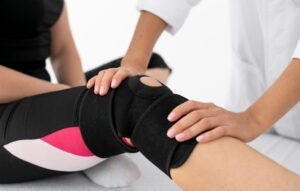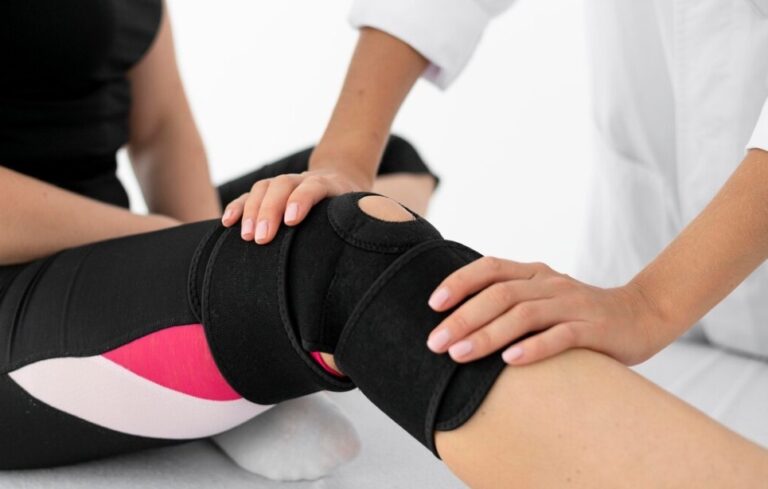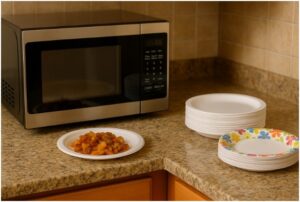I’ll be honest—one night after a long workday, I reheated my takeout noodles without thinking twice. I popped the whole container straight into the microwave, hit start, and went to scroll through my phone.
A few seconds later, I smelled something… odd. By the time I pulled it out, the noodles were fine—but the container? It had warped like modern art.
That’s when I started wondering, can you microwave styrofoam safely, or am I slowly poisoning myself? Turns out, that simple question opened up a whole world of “uh-oh” moments. So, if you’ve ever done the same thing, don’t worry—you’re not alone.
But let’s get real about what’s actually happening inside that microwave when styrofoam gets involved.
What Happens When You Microwave Styrofoam?
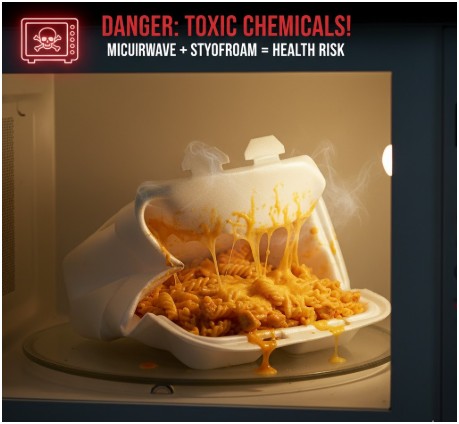
When you microwave styrofoam, you’re not just heating your leftovers—you’re heating a type of plastic called polystyrene. The problem? It doesn’t handle high temperatures well.
Once the heat builds up, the material starts to soften, warp, or even melt, especially when your food is oily or fatty.
That distortion isn’t just messy—it can release styrene, a chemical compound used to make styrofoam.
Researchers have linked high, long-term exposure to styrene with potential health risks, including certain cancers.
So yes, that innocent-looking cup or takeout box might leach harmful chemicals into your meal when zapped in the microwave.
And while you might think, “It’s just 30 seconds,” even short bursts can cause chemical migration if the food gets hot enough.
Is It Ever Safe to Microwave Styrofoam?
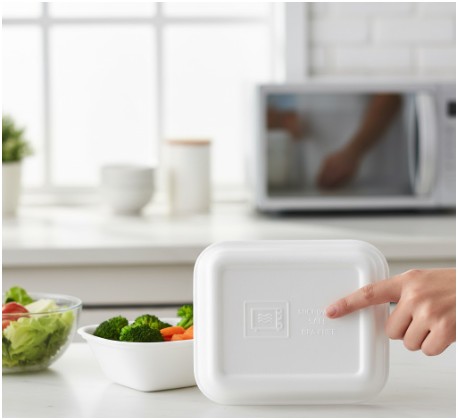
The short answer: sometimes—but you have to read the label carefully.
Some modern containers are labeled “microwave-safe” and are made from specially formulated polystyrene that can handle moderate heat. You’ll usually find a microwave symbol—three wavy lines—at the bottom of the container.
If there’s no label, assume it’s not microwave-safe. The absence of that symbol means the manufacturer hasn’t tested it for heating safety. And if you’re unsure? Play it safe and transfer your food to something you know can take the heat.
| Container Type | Microwave Safe? | Notes |
| Styrofoam (unlabeled) | No | Can melt, warp, or leach chemicals |
| Microwave-safe Styrofoam | Limited | Check label, short reheats only |
| Glass or Ceramic | Yes | Best for even heating |
| Silicone | Yes | Reusable and flexible |
| Paper-based (kraft/bagasse) | Usually | Still check labeling |
What Are the Risks of Microwaving Styrofoam?
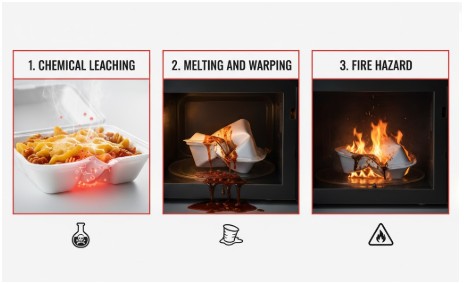
If you’ve ever noticed your container sagging after reheating food, that’s your warning sign. The risks go beyond aesthetics—here’s what’s really happening.
- Chemical Leaching
When styrofoam heats up, styrene can migrate into your food. While a one-time exposure won’t harm you, consistent use adds up. Studies have found traces of styrene in human fat tissue, and long-term exposure may have carcinogenic effects.
- Melting and Warping
Styrofoam wasn’t designed for direct heat. As temperatures rise, it softens, collapses, or melts entirely. This can cause spills, burns, and contamination of your food.
- Fire Hazard
Rare—but real. Extended microwaving can ignite styrofoam, especially if left empty or overheated. Nobody wants a kitchen fire just for the sake of warm leftovers.
How Can You Tell If Your Container Is Microwave-Safe?
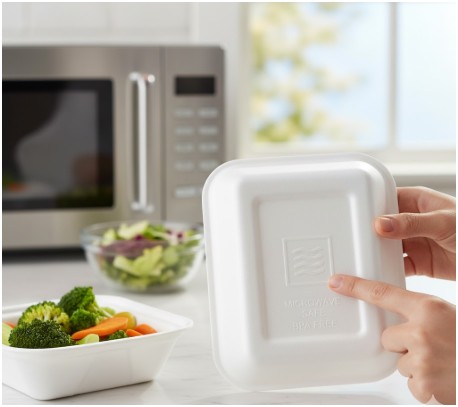
Before pressing start, flip your container over. If you spot the microwave symbol—usually a box with wavy lines—it’s been tested for microwave safety.
If there’s no label, that’s your cue to stop. Styrofoam products without that marking are unpredictable under heat, and no meal is worth risking melted plastic or chemical residue.
You can also test safely by pouring hot (not boiling) water into the container and letting it sit for a minute. If the material softens or distorts, it’s not microwave-safe.
What Should You Use Instead of Styrofoam?
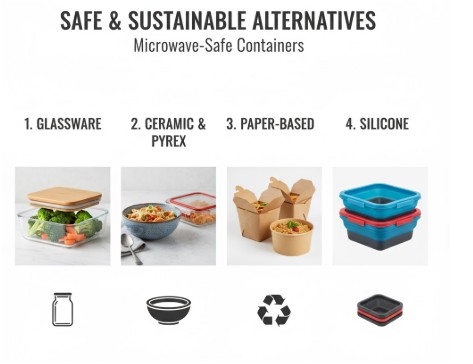
So, can you microwave styrofoam safely? Not really. But you have better options—ones that don’t involve mystery chemicals.
Here are my go-to replacements:
Glassware
My personal favorite. Glass dishes are microwave-safe, easy to clean, and don’t absorb flavors or odors. Plus, they heat food evenly.
Ceramic and Pyrex
These are classic choices for a reason. They hold heat well and stay durable for years.
Paper-Based Containers
If you love takeout, look for eco-friendly options made from kraft paper or sugarcane bagasse. These materials are microwave-friendly, but always double-check the label first.
Silicone Containers
Great for meal prep and storage. Food-grade silicone resists high heat, is reusable, and cools down quickly after heating.
How Do I Reheat Food Safely Without Styrofoam?
Here’s my simple reheating routine that keeps food (and me) safe:
- Transfer food to a glass, ceramic, or silicone container.
- Cover it loosely with a microwave-safe lid or damp paper towel to retain moisture.
- Use short intervals (30–45 seconds), stirring between rounds to heat evenly.
- Avoid overheating oily foods—they get extra hot and can damage containers.
- Let it rest for a few seconds before removing—containers can stay hot.
Trust me, it’s a small habit change that makes a big difference.
FAQs About Microwaving Styrofoam
1. Can you microwave styrofoam for a short time?
Technically, yes—but it’s not a great idea. Even quick heating can cause styrofoam to soften or leach chemicals. If you must, make sure it’s labeled microwave-safe and limit the time to under a minute. Still, I prefer transferring food to a safer dish.
2. What happens if you accidentally microwave styrofoam?
Don’t panic. If the food doesn’t taste or smell off, it’s probably fine once or twice. Just don’t make it a habit. Clean your microwave afterward, as melted styrofoam can leave residue or odors.
3. Are all takeout containers made of styrofoam unsafe?
Most are, unless marked otherwise. Some newer packaging is made from eco-friendly alternatives that mimic the look of styrofoam but are microwave-safe. Always check the symbol on the bottom.
4. Why is styrofoam still used if it’s risky?
It’s cheap, lightweight, and insulates heat well, which makes it convenient for restaurants. But many cities are moving away from it due to environmental and health concerns.
My Hot Take on Styrofoam and Microwaves
Here’s my truth: just because you can microwave styrofoam doesn’t mean you should. After my warped-noodle-container incident, I switched to glass and never looked back. It’s cleaner, safer, and better for both me and the planet.
If you value convenience, that’s fine—but do it smartly. Keep a microwave-safe bowl handy for quick transfers. A few extra seconds to swap containers can save your health and your lunch.
So next time you ask yourself can you microwave styrofoam, remember: the safest answer is still no.

